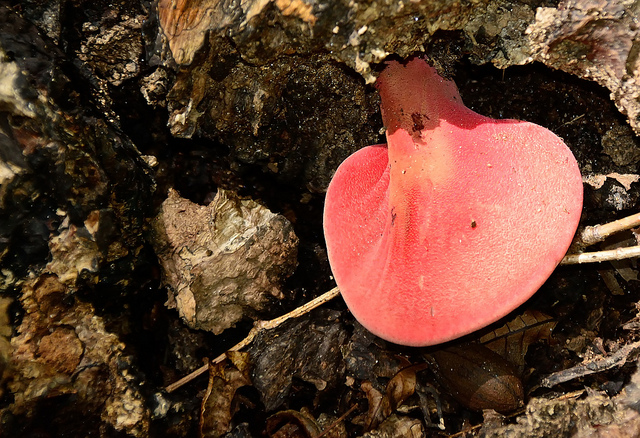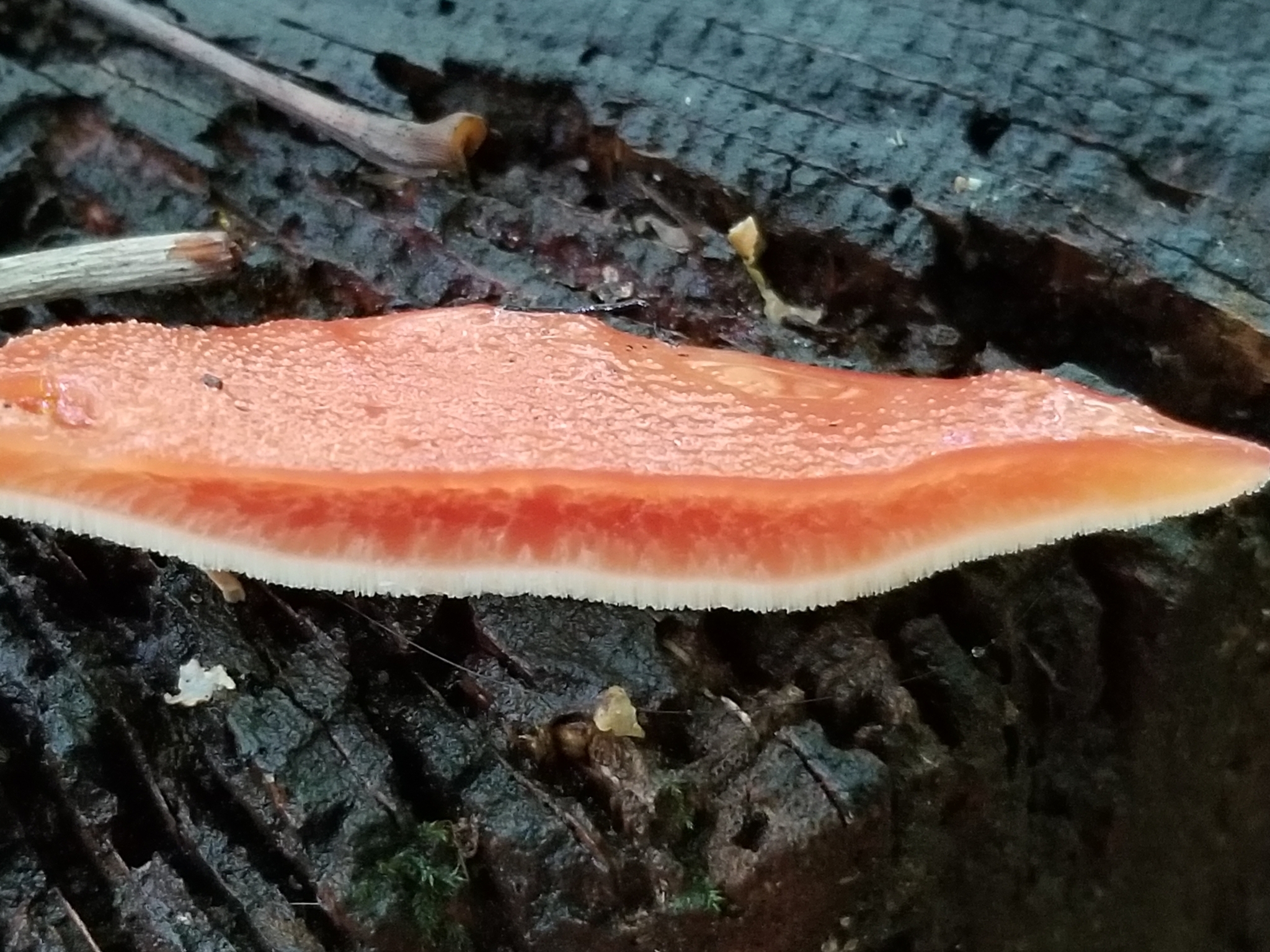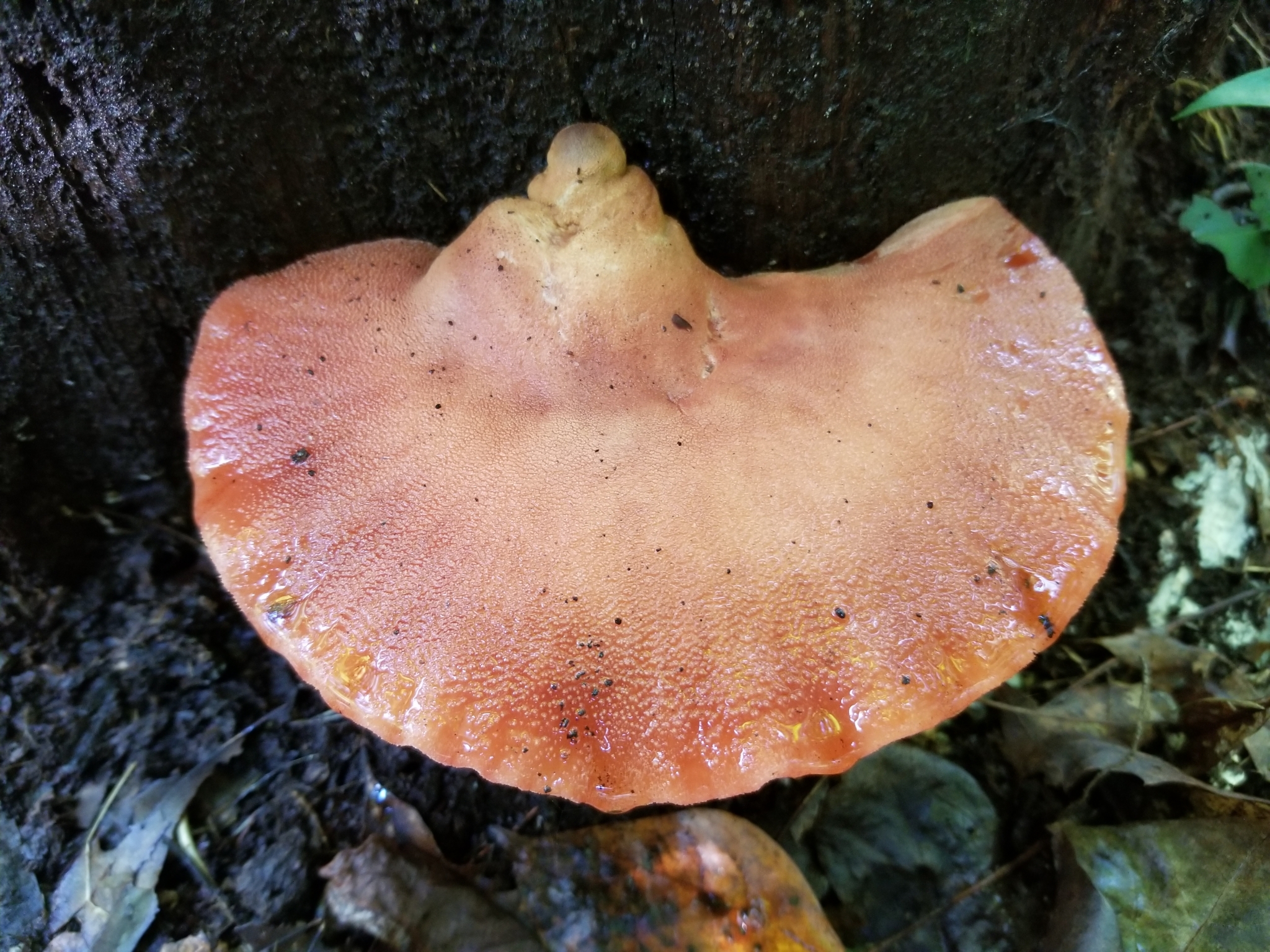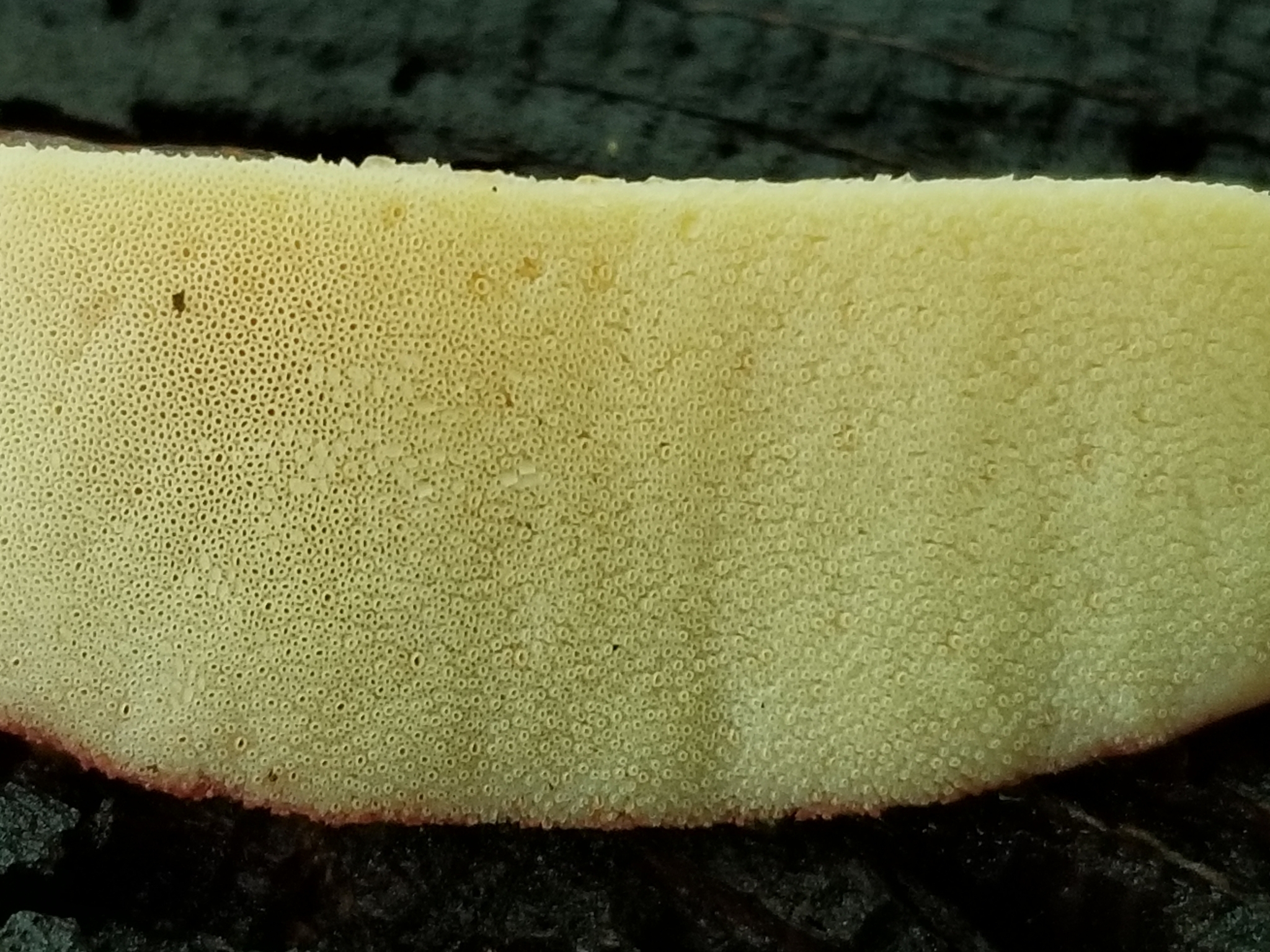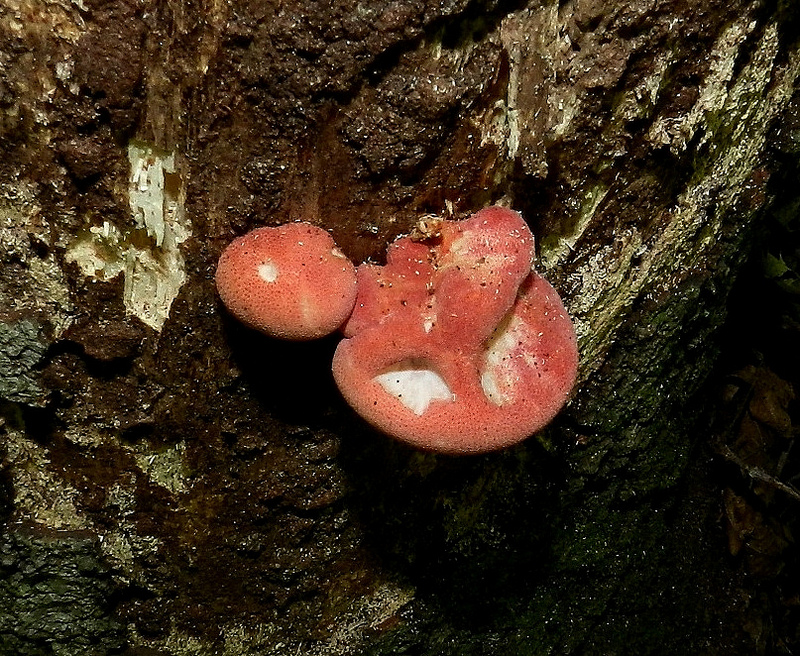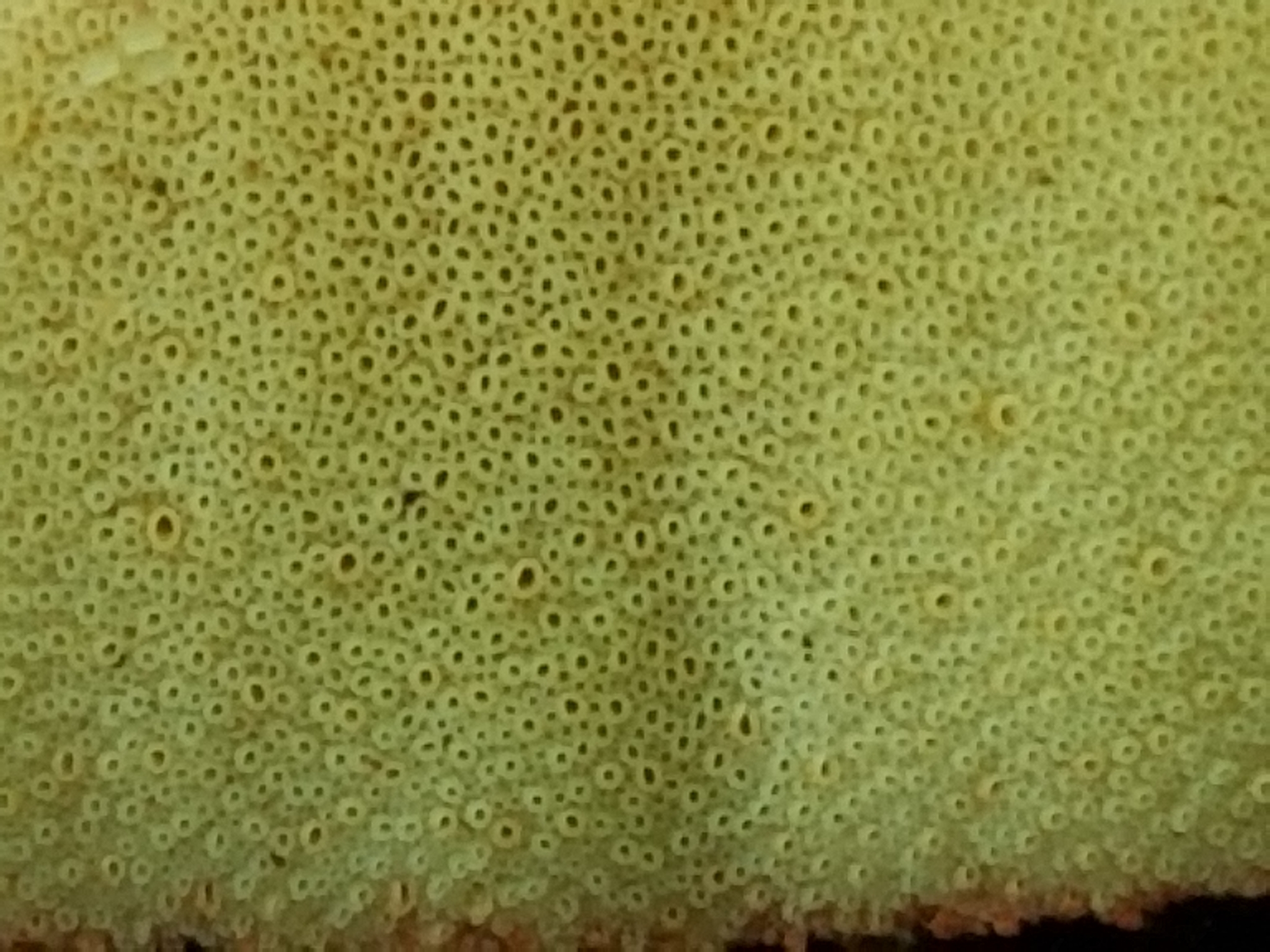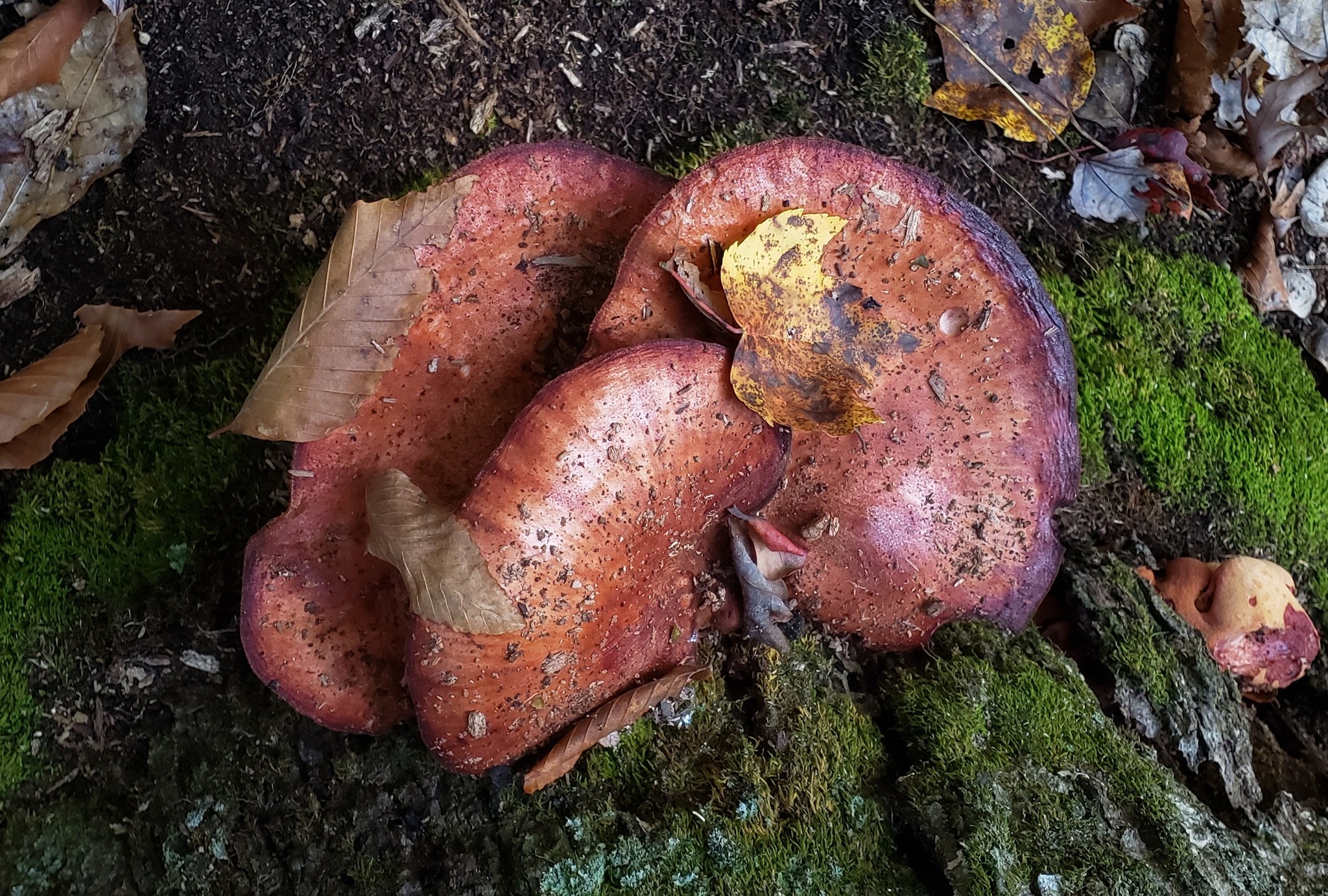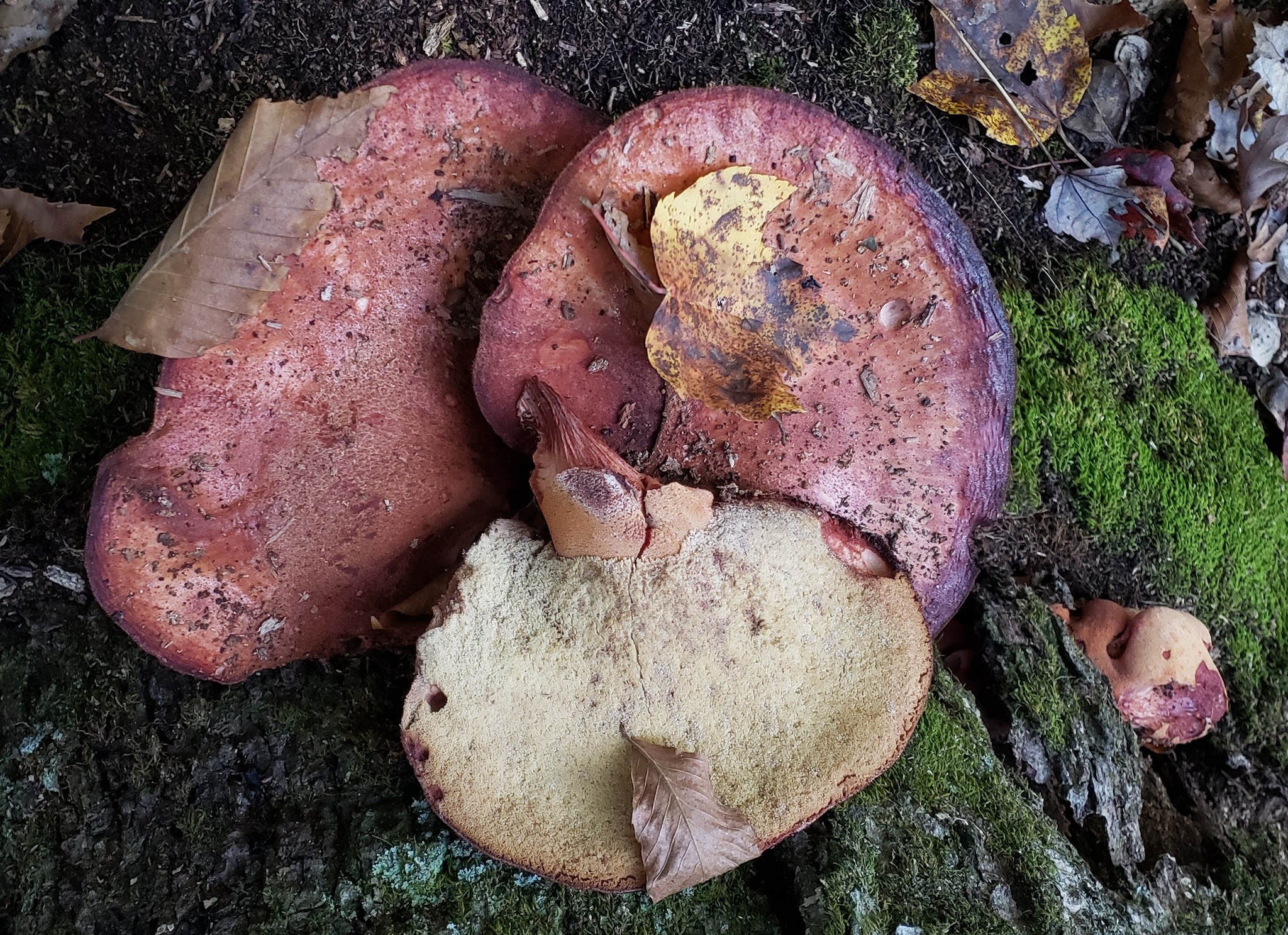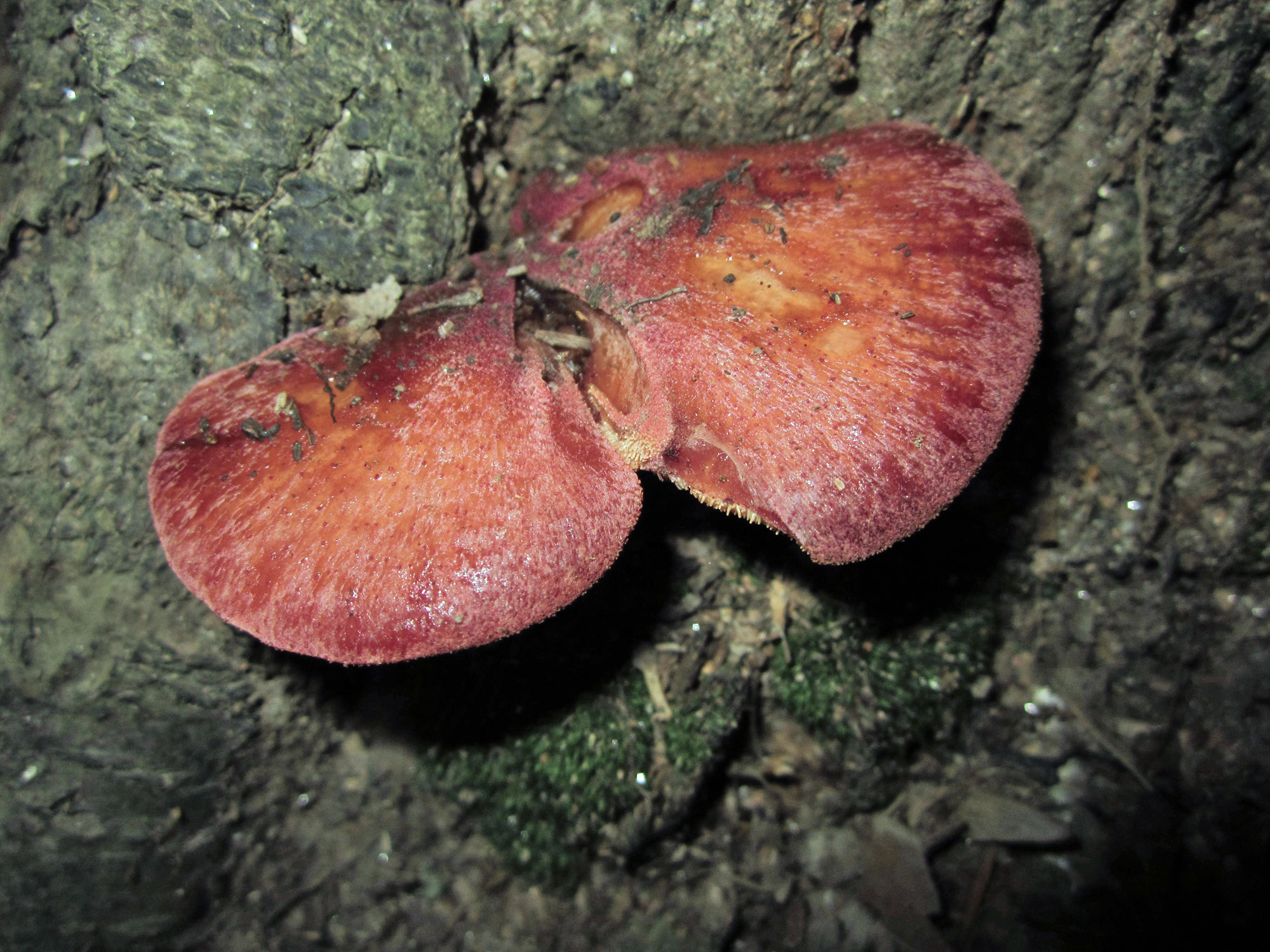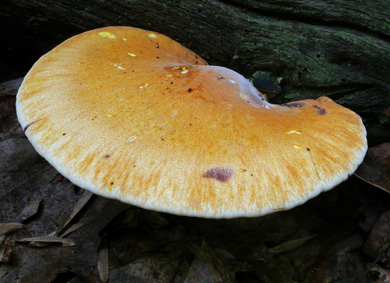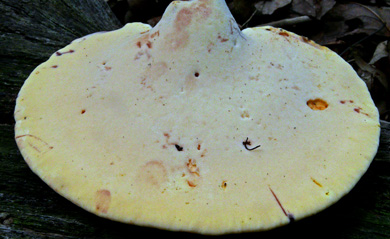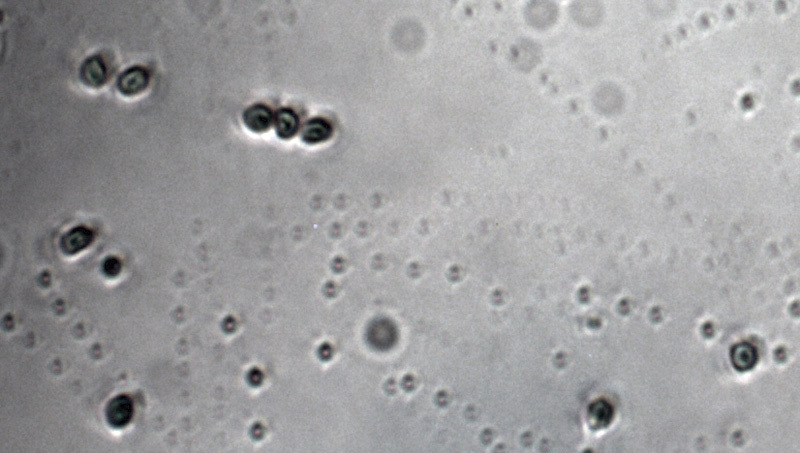Map Snapshot













84 Records
Status
Found solitary or in groups (often fused) on living or dead hardwood (especially oak) trees, stumps, and logs.
Description
Fruiting body: Up to 10", dark red or reddish-orange to purplish brown when mature, yellow-orange when young; smooth, velvety; gelatinous, often sticky/slimy; oval to circular; margin round, sharp, wavy; flesh dingy white to reddish zoned with darker and paler areas, darkens on exposure; oozes pink/red droplets when fresh. Pores: White to pinkish-yellow, stain reddish-brown in age (J. Solem, pers. comm.).
Seasonality Snapshot
Source: Wikipedia
| Fistulina hepatica | |
|---|---|

| |
| Beefsteak fungus | |
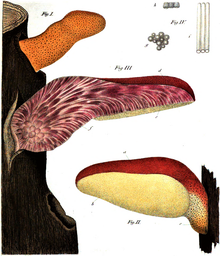
| |
| Carlo Vittadini: Fistulina hepatica (1835) | |
| Scientific classification | |
| Domain: | Eukaryota |
| Kingdom: | Fungi |
| Division: | Basidiomycota |
| Class: | Agaricomycetes |
| Order: | Agaricales |
| Family: | Fistulinaceae |
| Genus: | Fistulina |
| Species: | F. hepatica
|
| Binomial name | |
| Fistulina hepatica | |
| Synonyms | |
|
Boletus hepaticus Schaeff. (1774) | |
| Fistulina hepatica | |
|---|---|
| Pores on hymenium | |
| Cap is flat or offset | |
| Hymenium is decurrent | |
| Stipe is bare | |
| Spore print is pink | |
| Ecology is parasitic | |
| Edibility is choice | |
Fistulina hepatica, commonly known as the beefsteak fungus, beefsteak polypore, poor man’s steak, ox tongue, or tongue mushroom, is an unusual bracket fungus classified in the Agaricales. It can be found in Europe, Africa, Australia, and North America.
As its name suggests, it looks much like a slab of raw meat. It has been used as a meat substitute in the past, and can still be found in some French markets. It has a sour, slightly acidic taste. For eating, it must be collected young and it may be tough and need to be cooked for a long time.
Description
[edit]The cap is 7–30 centimetres (3–12 in) wide and 2–6 cm (3⁄4–2+1⁄4 in) thick.[1] Its shape resembles a large tongue and it is rough-surfaced. It is pinkish-red when young, darkening to reddish-brown with age. The spores are pink[1] and released from minute pores on the creamy-white underside of the fruit body. It bleeds a dull red juice when cut, which can cause stains,[1] and the cut flesh further resembles meat.[2] It is sour in taste.[1]
The underside of the fruiting body, from which the spores are ejected, is a mass of tubules.
Taxonomy
[edit]Fistulina is classified in the family Fistulinaceae;[3] molecular studies suggest close relations to the agaric mushroom Schizophyllum in the Schizophyllaceae (in the schizophylloid clade), but in the separate sister fistulinoid clade.[4] Fistulina is a cyphelloid genus, meaning that it is closely related to gilled fungi, but its fertile surface consists of smooth cup-shaped elements instead of gills. The underside (the hymenium) is a mass of tubules which represent a "reduced" form of the ancestral gills.
Etymology
[edit]The genus name is a diminutive of the Latin word fistula and means "small tube", whilst the species name hepatica means "liver-like", referring to the consistency of the flesh.
Distribution and habitat
[edit]The species is commonly seen in Britain and the rest of Europe from July to October,[5] but can also be found in North America, Australia, North Africa, and Southern Africa.
It is fairly common, and can often be found on oaks and sweet chestnut, from August to the end of autumn, on either living or dead wood. It has a tendency to impart a reddish-brown stain to the living wood of oaks, creating a desirable timber type. In Australia, it can be found growing from wounds on Eucalyptus trees. It causes a brown rot on the trees which it infects.[6]
Uses
[edit]It is edible and considered choice by some,[7] although older specimens should be soaked overnight, as their juice can cause gastric upset.[8] It does not tend to preserve well.[5]
See also
[edit]References
[edit]- ^ a b c d Davis, R. Michael; Sommer, Robert; Menge, John A. (2012). Field Guide to Mushrooms of Western North America. Berkeley: University of California Press. pp. 335–336. ISBN 978-0-520-95360-4. OCLC 797915861.
- ^ N. Arlott, R. Fitter and A. Fitter, Collins Complete Guide: British Wildlife ISBN 1-85927-092-1
- ^ Bon, Marcel (1987). The Mushrooms and Toadstools of Britain and North-Western Europe Publisher=Hodder & Stoughton. Hodder & Stoughton. ISBN 978-0-340-39935-4..
- ^ See the following two journal references for molecular evidence of the family relationship: Moncalvo, Jean-Marc; Vilgalys, Rytas; Redhead, Scott A.; Johnson, James E.; James, Timothy Y.; Catherine Aime, M.; Hofstetter, Valerie; Verduin, Sebastiaan J.W; Larsson, Ellen; Baroni, Timothy J.; Greg Thorn, R.; Jacobsson, Stig; Clémençon, Heinz; Miller, Orson K. (2002). "One hundred and seventeen clades of euagarics" (PDF). Molecular Phylogenetics and Evolution. 23 (3): 357–400. Bibcode:2002MolPE..23..357M. doi:10.1016/S1055-7903(02)00027-1. PMID 12099793., Hibbett, David S.; Binder, Manfred (2002). "Evolution of complex fruiting-body morphologies in homobasidiomycetes". Proceedings of the Royal Society B. 269 (1504): 1963–1969. doi:10.1098/rspb.2002.2123. PMC 1691125. PMID 12396494.
- ^ a b Francis-Baker, Tiffany (2021). Concise Foraging Guide. The Wildlife Trusts. London: Bloomsbury. p. 126. ISBN 978-1-4729-8474-6.
- ^ Funga Nordica. Copenhagen: Nordsvamp. 2008. p. 40 & 250..
- ^ Phillips, Roger (2010). Mushrooms and Other Fungi of North America. Buffalo, NY: Firefly Books. p. 304. ISBN 978-1-55407-651-2.
- ^ Miller Jr., Orson K.; Miller, Hope H. (2006). North American Mushrooms: A Field Guide to Edible and Inedible Fungi. Guilford, CN: FalconGuides. p. 426. ISBN 978-0-7627-3109-1.
External links
[edit]- mushroomexpert.com Description and additional links
- Beefsteak fungi and Brown Rot on oak.
